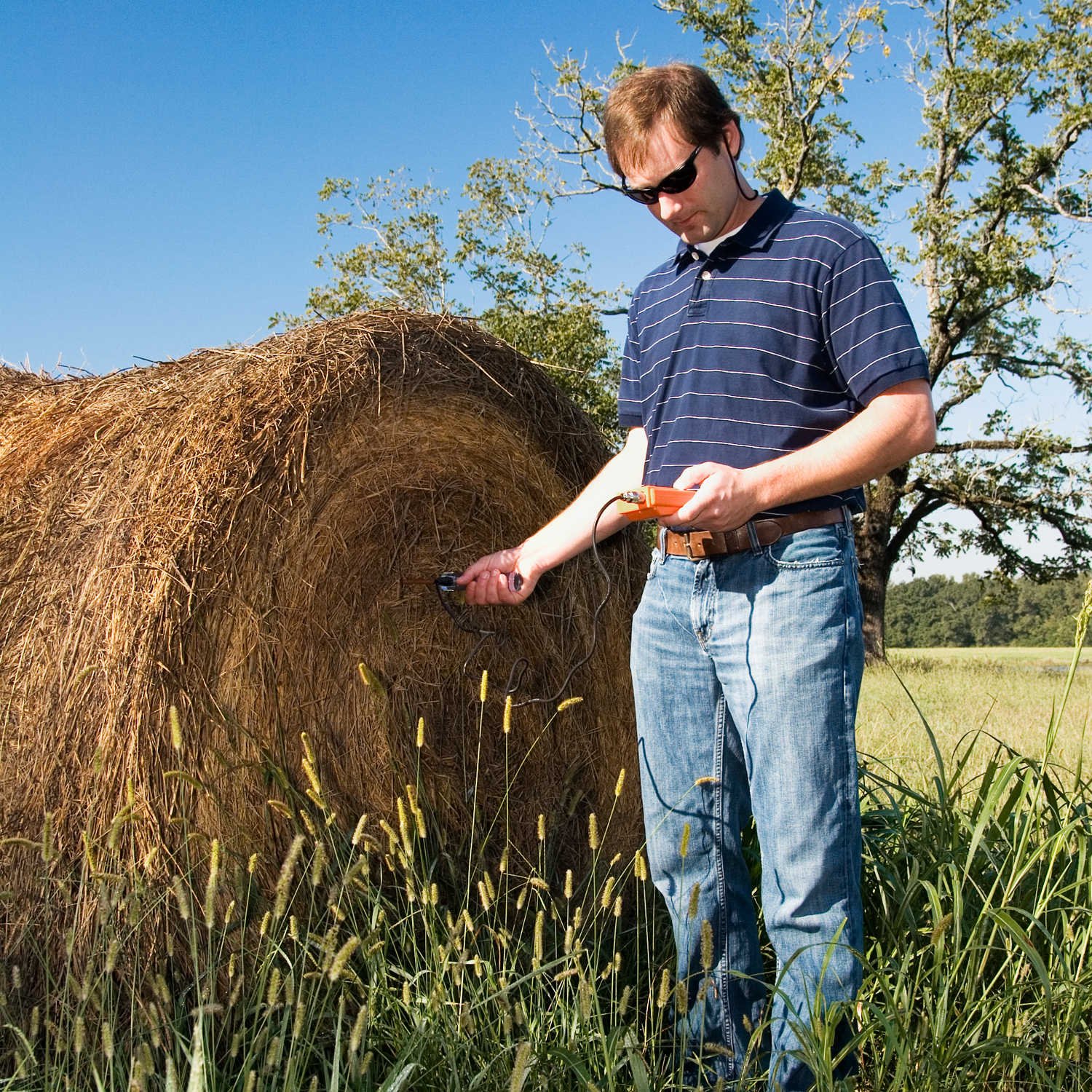Everything to Know About Hay Moisture Testing
Jun 6th 2022
Why Do You Need Quantitative Readings?
Proper hay storage is essential to prevent fire hazards and improve the safety of your hay products. Luckily, a moisture meter from QA Supplies can provide accurate measurements to optimize harvest times and verify all hay is ready to enter storage.
How to Measure Hay Moisture with a Quantitative Moisture Reading
Quantitative moisture readings represent the amount of moisture present in hay. A qualitative reading is only an estimate of the moisture content.
The main difference between quantitative and qualitative hay moisture content readings is specificity. Quantitative readings are absolute measurements of the moisture content, whereas qualitative readings are more beneficial for comparisons but are not precise.
Why Should I Test Hay Bales for Moisture?
Accurate quantitative data is crucial in hay storage. When hay has a high moisture content, bacteria can grow. At its most mild, this bacteria will cause the straw to decompose and make that year's harvest unusable. At its most severe, the bacteria can cause a hay bale to combust spontaneously, which can create dust explosions or a fire.
On average, it takes about three days of good weather to dry a bale of hay. It's best to mow right after a rain due to a better chance of good weather in the days following.
The time you mow may also impact the drying process. Some farmers prefer to cut in the early morning to gain a full day of drying time. Other farmers prefer to mow at the end of the day when the grass is dry to capture more of the sugars that move up the plant stem during the day.
When to Test Hay for Moisture Levels
If you are testing hay in a windrow, it is best to perform testing in the late morning or early afternoon on the third or fourth day of drying. Repeat the testing process several times with hay from different parts of your field for greater accuracy. For bales, test one to two days after baling. Similar to hay in a windrow, you should test your bale in different areas to ensure you have an accurate reading.
How to Test Hay Moisture
To use a quantitative hay moisture reader for hay in a windrow, pack the loose hay into a 5- to 10-gallon bucket before testing. Take multiple tests to ensure you have an accurate measurement. Once you take the first reading, you should mix the grass, repack it and test again.
As you test, notice where the hay is dense, and repeat the test on hay from different parts of your field. Your decision to begin baling should consider the variations among readings and average stem moisture.
When testing the moisture in a hay bale, you will need a quantitative hay moisture reader with an extended probe that can reach the bale's core. Another aspect to remember is that the internal density is not consistent throughout the bale. Test the bale in several locations and note any high readings.
Moisture Readings in Hay Bales
The ideal hay moisture content will vary depending on the bale type. Generally, dense bales can tolerate smaller amounts of moisture before becoming severe safety hazards. The acceptable moisture ranges of certain bales include:
- Small square bales: Due to a lower density, these bales should have between 18% to 20% moisture for the best quality and safety.
- Large square bales: Since large square bales have a greater density than small square bales, they should have a moisture range of 12% to 16%.
- Round hay bales: These bales have similar densities to large square bales and do best at a 15% moisture content.
Shop Moisture Meters at QA Supplies Today
Having an accurate moisture meter is a must for hay storage. If you're ready to start taking more accurate moisture readings of your hay, shop our selection at QA Supplies today!



